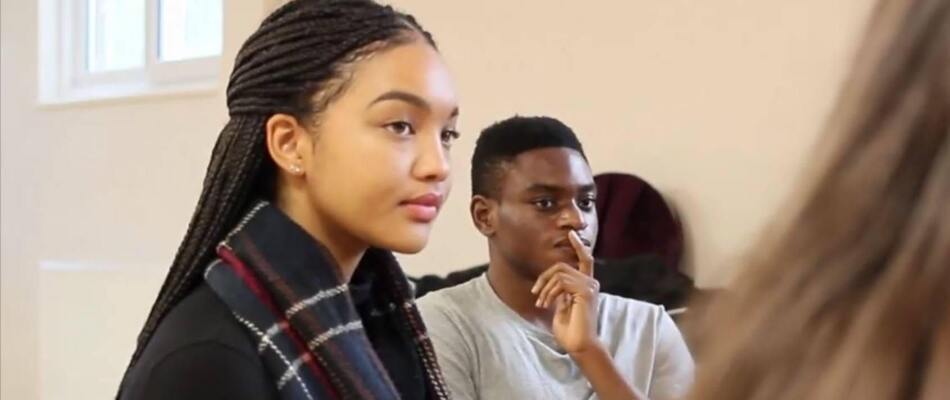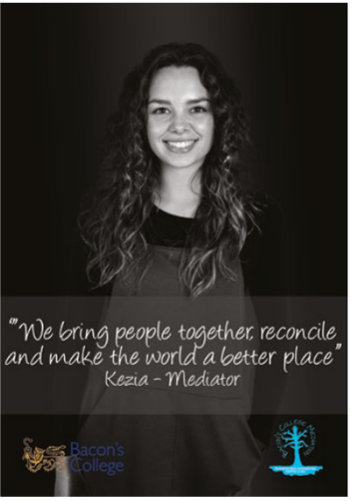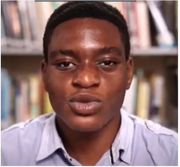Peer mediation: A way for students to resolve conflict themselves
Back
 (Picture credit above: CALM Mediation)
(Picture credit above: CALM Mediation)
Kezia Herzog was so successful at resolving conflict in her school that she was asked to do community mediation and speak in parliament about her experience. She now uses the skills as a school teacher. Kezia’s fellow student Bode Adeloye began working in the field and was recognised as Community Mediator of the Year 2020. Both first became mediators aged 16 thanks to their sixth form. What’s needed to make these stories possible – and what does effective mediation involve?
Why mediate?
How should conflict be resolved in 16+ education? As young people become adults, they find that conflict is undoubtedly part of life. It’s a time when we grow into our independence and have increasing autonomy to negotiate conflict ourselves. The plasticity of the teenage brain, with neural connections becoming much faster, makes this a fantastic time to help young people build their conflict resolution skills. There’s also a need at this age: we know that in adolescence we feel the urgency of social belonging particularly keenly, and exclusion cam be especially painful.
Sixth form and college leaders will want to give agency to young people to build their own skills and resilience, to be problem-solvers and peace-makers for themselves without always relying on an authority figure; equally we need our learning communities to be safe and consistent, with enough structure. How do you find that balance?
Can you teach conflict resolution?
There’s a lot of work that can be done on the level of conflict literacy. This can mean understanding our own relationship with conflict: are we avoiders or confronters; are we pleasers or compromisers? Can we adapt our conflict style? We can learn how our body and mind respond when we’re stressed: how our brains can, in the words of neuroscientist Dan Siegel, “flip their lid”, and how we can regulate ourselves. We can learn strategies and skills for responding to conflict that we can practise in everyday life, such as assertiveness and nonviolent communication. We can practise empathy through perspective-taking. This kind of learning is not strongly mandated in UK education, but it does takes place in different forms from early years onwards.
Increasingly, restorative practice, which seeks to redress wrongs peacefully but fairly, is thriving in many institutions. Cornwall-based RJ Working has been delivering new work with college construction students, for example. Lucy Pearson, Restorative Practice development lead for 16+, argues this is important: “Students can sometimes acquire practical skills for a vocation or job, but not necessarily the people skills.” The project helps to develop restorative skills for the workplace. “That can make all the difference when it comes to losing, surviving or thriving in a job.”
Peer mediation
There are limits to the difference such training can make if it focuses only on equipping the individual student without creating a supportive surrounding ecosystem. Where are the spaces in the college community to express these skills?
A mediation service led by students is one way to provide an opportunities for practice. “Peer mediation” is conflict resolution for young people by young people. When young people can’t resolve a conflict themselves through negotiation, peer mediators can help them work it out. The mediators are trained by external peace education experts to use the same essential processes and skills used in professional mediation in families, communities, industrial relations, and even international politics. They are confident facilitators, but they don’t impose a solution. Mediators don’t take sides, but they carefully elicit each person’s perspective and help them tune into each other’s subjective experience, how they feel, and what their needs are. Mediation offers the structure for the students in conflict, the disputants, but doesn’t diminish their responsibility.
“When we bring the two students into the room, we’re not there to point fingers,” explains Kezia. “We have to have the emotional maturity to deal with problems. It makes teachers’ lives easier.”
Many primary schools and an increasing number of secondary schools use peer mediation. This has been shown to reduce the number of incidents which escalate, and create calmer school environments (see https://www.peermediationnetwork.org.uk/evidence). Schools record a high success rate for mediations and OFSTED are consistently impressed by the mediators they meet. Sixth forms and colleges can continue to give conflict resolution and restorative practice their expression as a key part of 16+ provision.
Needed now more than ever
In our recent report, Peace at the heart, Quakers in Britain make the case for a relational approach at every level, from the individual to the global. Mediation and restorative approaches scaffold that in a learning community.
Whether students are looking at international conflict in Yemen or Ukraine or at intense mental and interpersonal challenges related to the pandemic and economic stress, the world needs peacemakers. Learning mediation skills, language, and principles can also be key to peace and justice in young people’s lives. RJ Working also works with groups of young people to promote dialogue about equality and diversity, including identity-based harm, helping young people take responsibility and repair harm caused by inequality.
“Restorative approaches can help us have the difficult conversations we’re all scared of instead of brushing it under the carpet,” says Lucy. “[Students] find they can challenge offensive behaviours in transformative ways.”
Proof in action
 Kezia and Bode both became mediators at Bacon’s College in Southwark, which exemplifies the sixth form model of peer mediation.
Kezia and Bode both became mediators at Bacon’s College in Southwark, which exemplifies the sixth form model of peer mediation.
“I’ve learnt invaluable skills for life,” Kezia said. “My confidence has grown so much from doing mediation. With every case you grow - with more experience, you learn more about yourself and the students.”
Rated by OFSTED as 'outstanding' for 'behaviour and safety of pupils', this inner-city secondary academy also saw a significant reduction in school exclusions in recent years. The peer mediators, aged 16-19, have a high profile in the school and help other students address challenging issues including name-calling, bullying and fights. Some even join adult mediators working in the community.
When Bode won the national Community Mediator of the Year award, he thought about the influence of his experience in sixth form. “Hopefully I can encourage people from my background, or any other background, to do something that’s different, try it out and have an impact on the community,” said Bode.
The trained mediators have a professional level skill for life. The wider learning community builds a culture of peace and non-violence, with students finding their own solutions to conflict and teachers freed up to teach.
Establishing and maintaining the mediation scheme at Bacon’s took commitment. The school partnered with the local mediation service, now called CALM Mediation, ensuring the students had the best training and support. The model is replicable, as many mediation services are happy to collaborate and provide training and support – often through charitable funding - while the Peer Mediation Network and the Civil Mediation Council are working on formal pathways to recognise the skills and achievements of young mediators. If your college and students could benefit, get in touch with these networks to tap into expertise in your area.
Ellis Brooks is the Peace Education Coordinator for Quakers in Britain and supports the national Peer Mediation Network.

